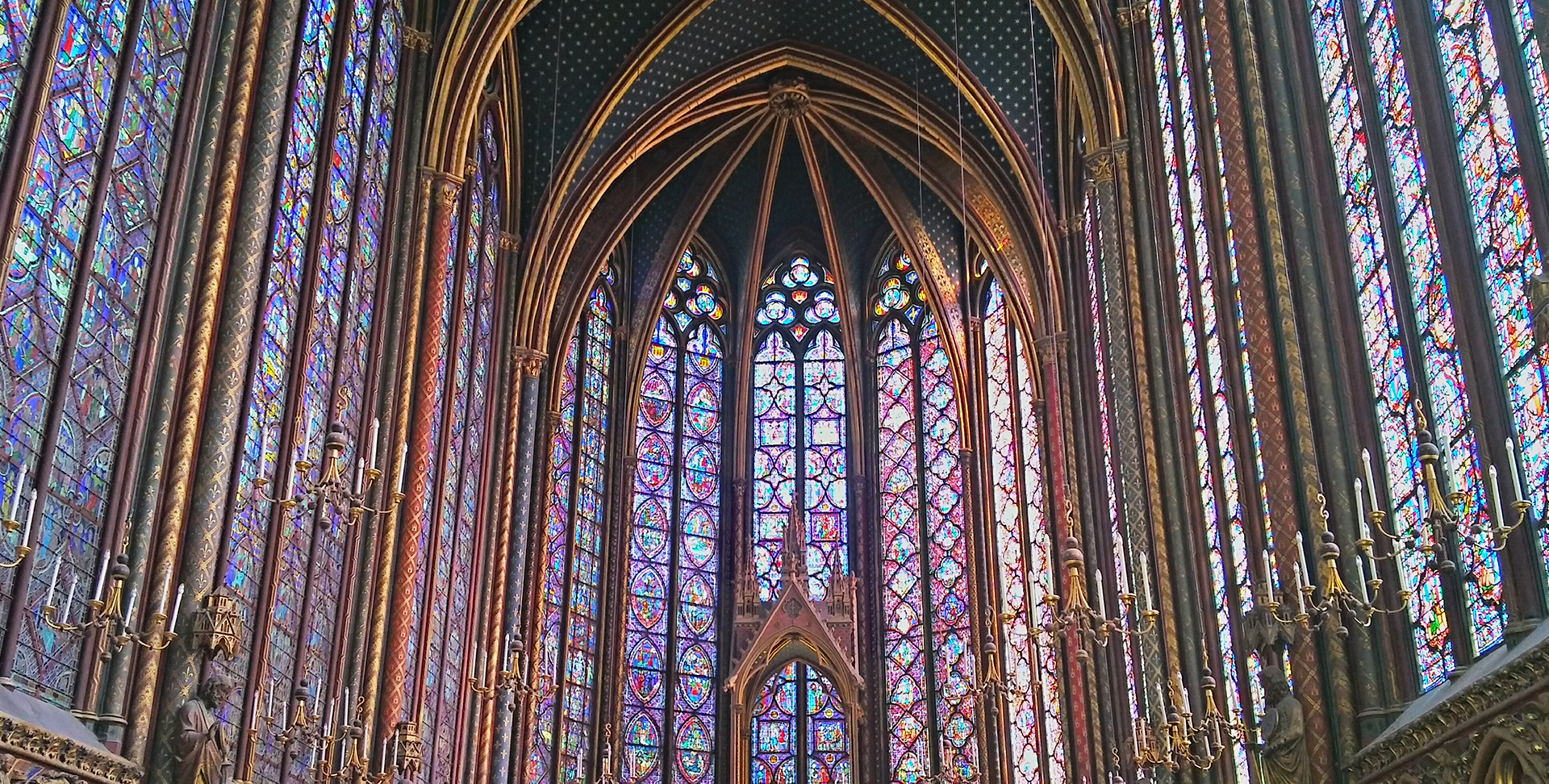


During the Suger period, it was out of the question to mention the word “Gothic”! In fact, this word comes from the name of a group of people who were thought of as “barbaric”, the Goths, who no longer existed, but there was absolutely no connection.
It’s just that during the Renaissance, medieval art was considered ugly, and fit for barbarians. That is how describing something as “Gothic” became a way of saying you didn’t like it. Gothic art is considered in a more favourable light today, but the name has remained.


During the Renaissance, 12th-15th century art was considered barbaric and it was given the name “Gothic”.
What were the new building techniques used in Saint-Denis?
The Pointed Arch (pointed shape) replaced the rounded arch.
Crossed ribs, consisting of two crossed pointed arches, made the vault. This was held up by pillars rather than the walls.
The buttress is placed against the pillars. It also provides support for the vaulted ceiling.
With these new building techniques, walls no longer needed to be thick. Big windows could be installed in the walls!

In Gothic architecture, walls are thinner and windows bigger, made possible by technical innovations such as crossed ribs.
Saint-Denis is no ordinary church. As well as contributing to the birth of Gothic churches, it housed the royal tombs.Almost all the French kings are buried here.
During the 13th century, Louis IX, (known as Saint Louis) wanted to make his mark on it and took it upon himself to order sculptures for the tombs of his predecessors.
These are known as gisants (recumbent statues). Each monarch is portrayed as a handsome young person with a peaceful face, lying down, ready for their eternal rest!

The Saint-Denis Church contains the tombs of many French Kings, most of them topped by gisants.
In all, Gothic architecture existed for five centuries, giving it time to develop and change.

The Gothic period went through the following phases: primitive, classical, rayonnant (decorated), and finally, flamboyant.
One of the Gothic period’s masterpieces is in Paris. This is the Sainte-Chapelle, commissioned by Louis IX.
Louis IX had bought some very prestigious relics, such as Christ’s crown of thorns, and he needed a majestic place to keep them.
The facts and figures about Saine-Chappelle are mind boggling:

The Sainte-Chapelle, built during the reign of Louis IX in Paris, is a wonderful example of Gothic architecture, famous for the large surface area of its stained glass windows.
Through Gothic architecture and its large windows, stained glass windows have become a very important part of architecture.
A “carton” (a life-sized painting) is created to serve as a model.
Then how is it made?

Stained glass glazing techniques consist of mixing metallic oxides with hot glass paste, which is then blown and cut up and assembled using lead strips.
Cathedrals were not the only large-scale constructions of the time. There were also many fortresses built during the Middle Ages!
They served the following purposes:
Do you need a guidebook to build your own mediaeval castle? Follow these steps:

The forts of the Middle Ages included a keep and an enclosing wall and were surrounded by a moat, broken only by a drawbridge, for self-defence against one’s enemies.

"*" indicates required fields